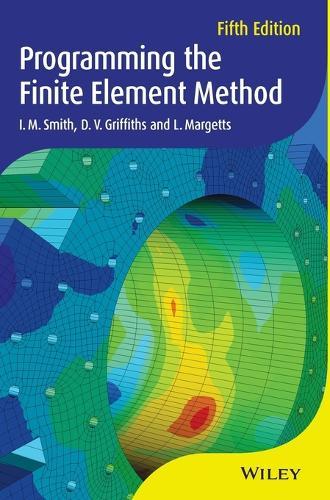Overview
Many students, engineers, scientists and researchers have benefited from the practical, programming-oriented style of the previous editions of Programming the Finite Element Method, learning how to develop computer programs to solve specific engineering problems using the finite element method. This new fifth edition offers timely revisions that include programs and subroutine libraries fully updated to Fortran 2003, which are freely available online, and provides updated material on advances in parallel computing, thermal stress analysis, plasticity return algorithms, convection boundary conditions, and interfaces to third party tools such as ParaView, METIS and ARPACK. As in the previous editions, a wide variety of problem solving capabilities are presented including structural analysis, elasticity and plasticity, construction processes in geomechanics, uncoupled and coupled steady and transient fluid flow and linear and nonlinear solid dynamics. Key features: Updated to take into account advances in parallel computing as well as new material on thermal stress analysis Programs use an updated version of Fortran 2003 Includes exercises for students Accompanied by website hosting software Programming the Finite Element Method, Fifth Edition is an ideal textbook for undergraduate and postgraduate students in civil and mechanical engineering, applied mathematics and numerical analysis, and is also a comprehensive reference for researchers and practitioners. Further information and source codes described in this text can be accessed at the following web sites: www.inside.mines.edu/~vgriffit/PFEM5 for the serial programs from Chapters 4-11 www.parafem.org.uk for the parallel programs from Chapter 12
Full Product Details
Author: I. M. Smith (University of Manchester, UK) ,
D. V. Griffiths (Colorado School of Mines) ,
L. Margetts (University of Manchester, UK)
Publisher: John Wiley & Sons Inc
Imprint: John Wiley & Sons Inc
Edition: 5th edition
Dimensions:
Width: 17.80cm
, Height: 3.60cm
, Length: 25.20cm
Weight: 1.188kg
ISBN: 9781119973348
ISBN 10: 1119973341
Pages: 688
Publication Date: 25 October 2013
Audience:
Professional and scholarly
,
Professional & Vocational
Format: Hardback
Publisher's Status: Active
Availability: Out of stock

The supplier is temporarily out of stock of this item. It will be ordered for you on backorder and shipped when it becomes available.
Author Information
Ian M. Smith and Lee Margetts, University of Manchester, UK and D. V. Griffiths, Colorado School of Mines, USA Professor Ian Smith is Professor Emeritus at the University of Manchester. He is a Fellow of Royal Academy of Engineering and has 200 published research papers. He has authored 5 books, the latest Boundary Element Method with Programming (Springer 2008). D.V Griffiths is Professor of Civil Engineering, Division of Engineering at the Colorado School of Mines. His research focuses on oil resource geomechanics, probabilistic geotechnics, soil mechanics and foundation engineering, finite element software development. Dr Lee Margetts is Head of Synthetic Environments at the University of Manchester Aerospace Research Institute. Dr Margetts' main areas of expertise are in structural mechanics, geotechnical engineering, high performance computing and tomographic imaging. His main research activities concern investigating how real materials behave (both organic and inorganic) and how this can be simulated using computers.




